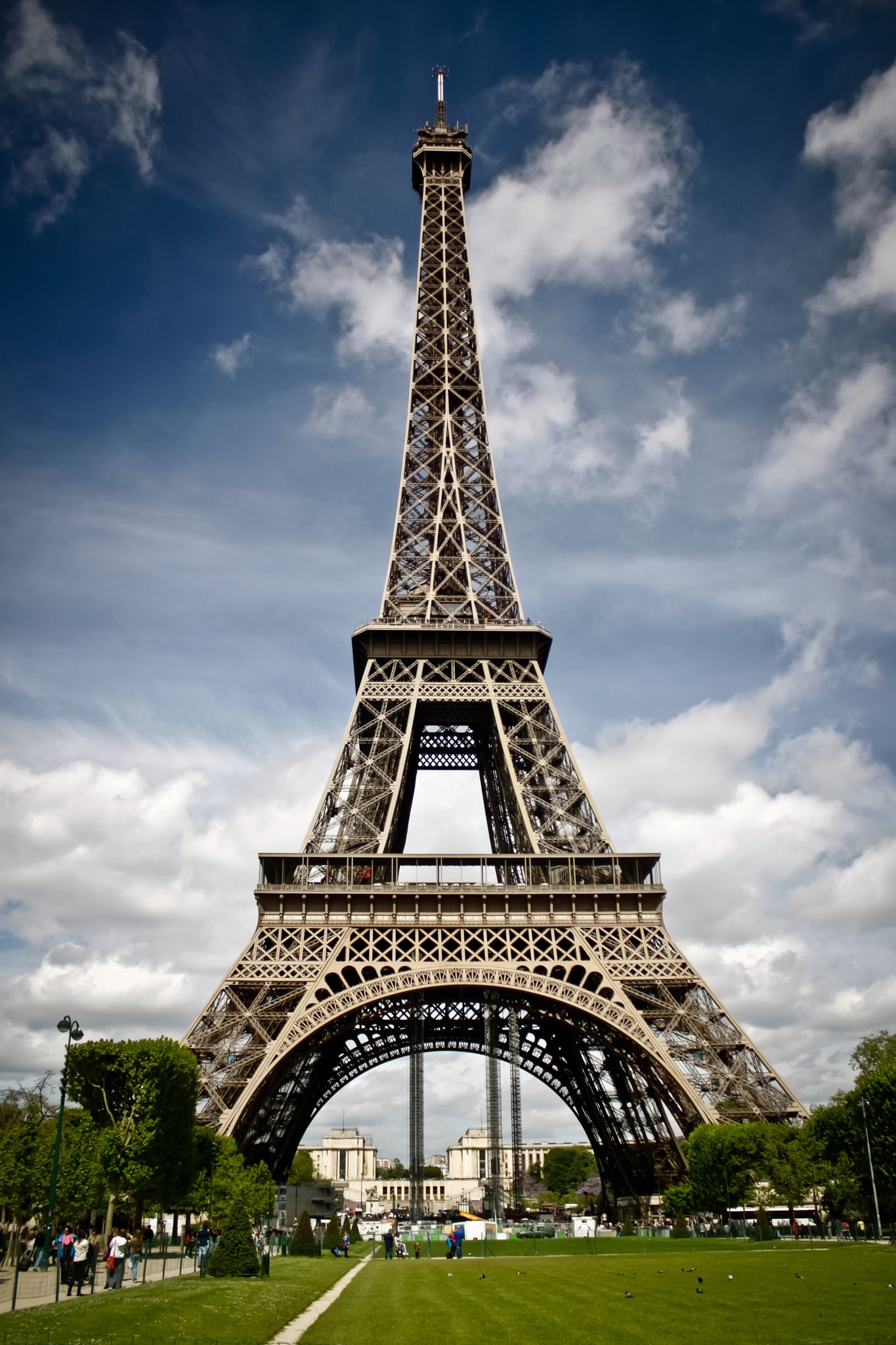Historical context
In France experiencing political and economic difficulties, and still marked by the memory of his loss to Germany in 1870, imposes the idea of a World Expo able to rehabilitate the country and restore its prestige in relation to the world. Held in Paris in 1889, the centenary of the French Revolution, the exhibition is entirely devoted to the iron, and "nail" is the three hundred meters high tower designed by Maurice Koechlin and built by Gustave Eiffel.
Image analysis
In the district of Champ de Mars changing in the late 1880s, the construction of the Eiffel Tower which begins in January 1887 is a new and surprising spectacle, regularly followed by a crowd of onlookers and artists. Among them, an unnamed photographer focuses each month to fix his camera with the progression of iron tower in the Parisian sky from one of the towers of the Trocadero Palace.
Photographs taken 8 October and 10 November 1887 show the beginning of the simultaneous mounting of the four pillars, which began in July 1887 after five months of foundation work. Already appear the trellis system (interlacing steel beams) and bracing devices (oblique assembly) that characterize its slender and original silhouette. After ten months of work, the most dangerous stage of the construction of the Tower is crossed, as evidenced by the photograph of 10 April 1888: the junction on the first floor of the pillars inclined was conducted ten days earlier by a horizontal beam , known as "beam waist" adjusted to the millimeter thanks to a system of jacks and hydraulic presses. This first platform now serving as a fulcrum to the upper parts, May 10, 1888 shows the photograph of the wooden scaffolding that have been used previously to hoist the different elements gradually disappear. The elevation of the Tower is continuing according to this mounting technique entirely in cantilever, the second floor is reached six months later, as indicated by the photograph of 14 October 1888. In this inescapable meeting of pillars The photograph taken Nov. 14, 1888 captures the point of the building where the four rafters join to form a single trunk that tapers to the top, through the third floor, as shown in the photograph April 2, 1889, two days after the inauguration.
Interpretation
Photography, which lends itself particularly well to this kind of reporting, perfectly reflects the precise and quick mounting of the Eiffel Tower, as it was planned by Gustave Eiffel in his workshops of Levallois-Perret and as it was perceived by all observers, namely as a huge Meccano where human intervention seems nonexistent. Having aroused fears and scandals [1] throughout its construction, the "Iron Lady", a real triumph of vitality and inventiveness of French architecture, is the most successful World Expo 1889 and thus gives France its place among the great nations. Built for twenty years but only saved by his scientific role, the Eiffel Tower has become the symbol of Paris.


0 التعليقات:
إرسال تعليق